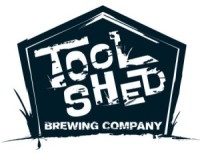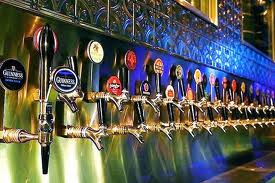 Exactly one year ago today, the AGLC announced a package of policy changes coming out of a wide-scale policy review. At the time (you can read the post here) I opined that it was a mixture of small steps with some missed opportunities. It seemed as good a time as any to analyze what effect the changes have had on craft beer in the province. My CBC column this afternoon (4:40 on 740 AM/93.9 FM or live streamed here – sorry they don’t generally post it on the website after) will be looking at the state of affairs, but I thought I would delve into it a bit deeper here.
Exactly one year ago today, the AGLC announced a package of policy changes coming out of a wide-scale policy review. At the time (you can read the post here) I opined that it was a mixture of small steps with some missed opportunities. It seemed as good a time as any to analyze what effect the changes have had on craft beer in the province. My CBC column this afternoon (4:40 on 740 AM/93.9 FM or live streamed here – sorry they don’t generally post it on the website after) will be looking at the state of affairs, but I thought I would delve into it a bit deeper here.
So, as a quick recap (for more details read the original post or the report itself) the key changes, at least potentially, were: the elimination of a minimum production capacity, brewpubs allowed to sell retail, small breweries could open restaurants, and permitting off-site brewery retail locations. More recently, the AGLC quietly announced that breweries can now sell pints in their brewery tasting rooms (see post here).
After only one year, we can’t expect the world to have been turned upside down. But, let’s take a look at what we have seen so far. I contacted the AGLC to get some numbers and facts – so for once I am not just making this all up on the fly.
First not all of the 39 recommendations have been implemented yet. The rules around allowing breweries to open restaurants are still being worked on, they are still pondering whether to let breweries sell in farmers’ markets, and we are also still waiting for the new unified producer’s license.
What did the policy changes do? The key measure, obviously, is whether they have spurred any growth in Alberta-based breweries.
 Since last December, three new breweries have been granted licenses, two of whom would have not been eligible last year. Tool Shed Brewing is the largest and most recent, having just gotten approval a week ago. The two small breweries are Calgary’s The Dandy Brewing Company (profile here and recent review here) and Troubled Monk Brewery in Red Deer. The latter is not yet selling beer. I have been in contact with them and will have a profile on them soon, but can tell you for the moment they are extremely small, currently running a 50-litre system (that is not a typo), but will be expanding to a 15-barrel brewhouse next year. More on them soon.
Since last December, three new breweries have been granted licenses, two of whom would have not been eligible last year. Tool Shed Brewing is the largest and most recent, having just gotten approval a week ago. The two small breweries are Calgary’s The Dandy Brewing Company (profile here and recent review here) and Troubled Monk Brewery in Red Deer. The latter is not yet selling beer. I have been in contact with them and will have a profile on them soon, but can tell you for the moment they are extremely small, currently running a 50-litre system (that is not a typo), but will be expanding to a 15-barrel brewhouse next year. More on them soon.
In addition, there are three breweries who have applied for a license and, for a number of reasons (including not yet having built the brewery), have not yet been granted. They are Half Hitch Brewing in Cochrane (profile here), Wild Craft Brewery in Lethbridge (profile here) and Fat Unicorn Brewery in Plamondon (a small town near Lac La Biche, for those wondering).
When I saw the last one on the list, I went “who?”. I had heard not a peep about them. I made a few inquiries and briefly connected with the owner. I will have a profile of them early in the new year, but can say for the moment they have a 10-barrel brewhouse with plans to distribute across northern Alberta.
Six in 12 months is not a mind-blowing number, given that many have opened in Ontario in the past month alone. However, we need to keep in mind it can take a couple of years for a brewery to get to the license phase, so we shouldn’t jump off any cliffs yet. Also, I find it interesting to see the diversity in brewery location: in the north and south; big cities, medium cities and small towns. The absence of Edmonton is a slight concern, although I am aware of at least a couple of groups in the Capital Region at the planning stages, so that may change.
A better indicator is the number of expressions of interest. AGLC tells me they have had approximately 30 inquiries about brewery operations in the past year. Many, if not most, of those are simply tire-kickers and will never see the light of day. However it is not a trifling number. If even one in three of those turns into a new license, Alberta will almost double the number of breweries it has.
The other policy changes seem to have sparked little change. Brewsters has begun selling its beer in liquor stores, but other than that little has changed. No breweries have applied for an off-site retail store and the brewery-operated restaurant provisions have not yet passed.
In sum, the world of beer in Alberta has not changed substantially, but there are ripples of movement. We have some reason for guarded optimism but need to balance that with a healthy recognition that a B.C. or Ontario sized wave of new breweries is not going to happen here anytime soon.
 I called them baby steps a year ago and the results seem to have borne me out. In part that is because the policy changes merely scrape the surface of what it needed to create a growing, vibrant local beer industry. Much more would need to change.
I called them baby steps a year ago and the results seem to have borne me out. In part that is because the policy changes merely scrape the surface of what it needed to create a growing, vibrant local beer industry. Much more would need to change.
The fact is Alberta breweries are a drop in the beer glass. At last count there were over 5,500 beer SKUs in Alberta. Taking into account the big boys’ penchant for multiple SKU-ing (six-packs, 12-packs, 18-packs, 36-packs, bottles, cans, supercans, wide mouth cans, mini-shots … I am expected foot-long cans and nano-cans any day now!), we can still safely say there are a couple of thousand different beer products selling in Alberta. The AGLC says 800 of those 5,500 SKUs are from Alberta breweries. My suspicion is that number includes old SKUs for discontinued beer that haven’t been cancelled (breweries often leave old SKUs active just in case they re-introduce the beer), as well as multiple packaging (kegs, six-packs, etc.). A more accurate number (although I haven’t done a close count) is likely closer to 150 Alberta beer currently available out of about 2000 in total. (As a side note, it is a telling statement that I couldn’t search the Connect Logistics database for products made in Alberta – it allows country searches only.)
Other provinces actively promote their local producers, giving them marketing assistance, dedicated shelf space in stores and even erecting barriers against beer from other provinces. The Alberta government does none of those things. In part they can’t because of the decision 20-years ago to privatize retail (my views on this are well known – I have posted on the topic here many times), but they have also adopted the position that it is not their job to help promote Alberta craft beer. Instead they brag about how much “choice” Albertans have to spend their beer money. It is counter-productive and much bigger steps are needed.
I am glad there are more breweries opening and hopeful that over the next couple of years we will witness a noticeable bump in the number of breweries. I look forward to the day when my Prairie Beer Page becomes untenable by the sheer number of breweries to profile that I have to break it into smaller bits. But I suspect that unless there is a series change in the government’s outlook on this file, I suspect that day will be a long time coming.
The policy changes seem to be doing what they were designed to do. Only they were designed to only engage in initial steps. Much more visionary and supportive policies are needed if we want to make the same kind of jumps our neighbours are taking.

Leave a Reply